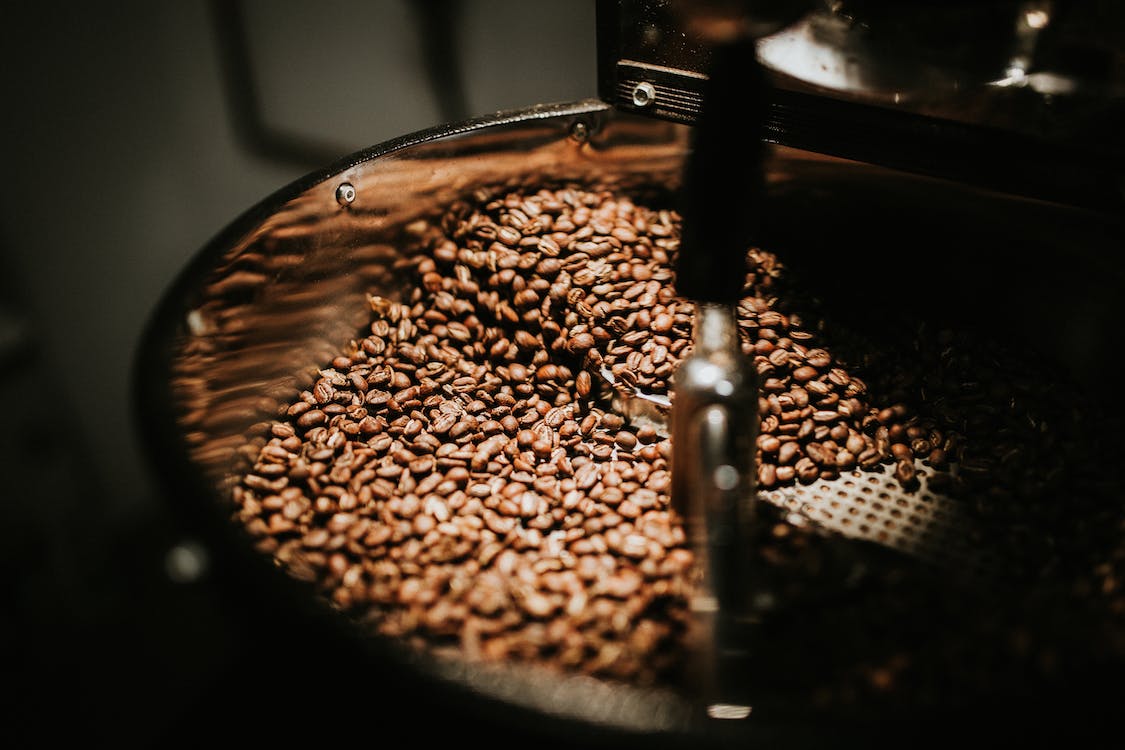
FAQ About Coffee

How is coffee roasted?
Coffee roasting is the process of applying heat to green coffee beans to transform them into the roasted coffee beans used for brewing. Roasting is a crucial step that greatly influences the flavor, aroma, and overall characteristics of the coffee. Here's an overview of the coffee roasting process:
Green Coffee Beans: The process begins with green coffee beans, which are the raw, unroasted beans that have been harvested, processed, and dried.
Preheating the Roaster: The roasting machine, often called a coffee roaster, is preheated to the desired temperature before the green coffee beans are loaded into the roasting chamber.
Loading the Beans: The green coffee beans are loaded into the roasting chamber, which is typically a rotating drum or a fluidized bed. The quantity of beans loaded depends on the capacity of the roaster and the desired batch size.
Roasting Profiles: The roaster operator sets the roasting parameters, including temperature, airflow, and duration, to create a specific roasting profile. Different profiles are used to achieve desired flavors, whether it's a light roast, medium roast, dark roast, or a specific roast level in between.
Roasting Process: As the roasting begins, the beans are exposed to heat, causing various chemical reactions to occur. The roasting process involves multiple stages:
- Drying Phase: The initial stage involves removing moisture from the beans. The beans undergo a drying process, and their color changes from green to yellow.
- Maillard Reaction: As the temperature increases, the beans undergo a series of chemical reactions known as the Maillard reaction. This reaction leads to the development of flavor compounds, producing aromas and flavors characteristic of roasted coffee. The beans turn from yellow to various shades of brown.
- First Crack: During the roasting process, the beans reach a critical point known as the first crack. This is an audible popping sound caused by the expansion of the beans due to the release of steam and gases. The first crack indicates the beans have reached a light to medium roast level.
- Development Stage: After the first crack, the beans continue to roast, and their flavors continue to develop. Roasters can choose to stop the roasting process at any point to achieve the desired roast level, such as medium, medium-dark, or dark roast.
- Second Crack (Optional): In some roasts, particularly darker roasts, a second crack may occur. This crack is louder and more pronounced than the first crack and signifies a further level of roasting.
Cooling and Resting: Once the desired roast level is achieved, the roasted beans are quickly cooled to halt the roasting process and stabilize the flavors. Cooling can be done using airflow or water cooling methods. After cooling, the beans are allowed to rest for a period of time to degas and develop their flavors fully. This resting period, known as the "coffee's resting phase" or "degassing period," typically lasts from a few hours to several days, depending on the desired flavor profile and roast level.
Packaging: After resting, the roasted coffee beans are ready for packaging. They are typically packaged in airtight bags or containers to preserve freshness and protect them from exposure to moisture, oxygen, and light.
